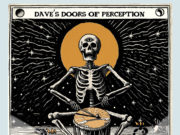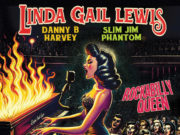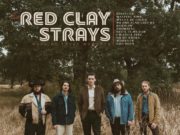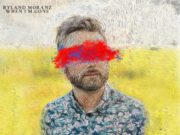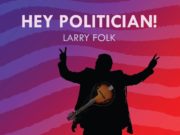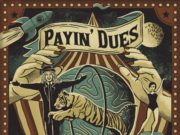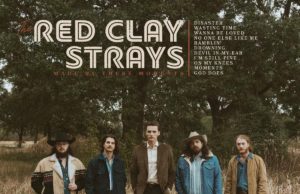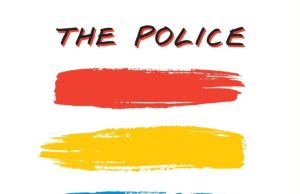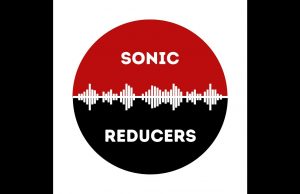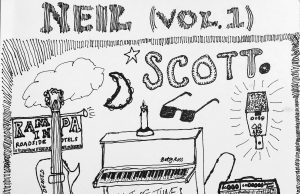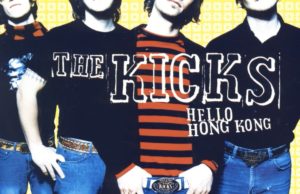 For a while when I was in high school, one of the handful of TV channels we got in rural Upper Ottawa Valley started showing late-night reruns of Don Kirschner’s Rock Concert. I’d never heard of it, but accidentally taped part of it once when I set the VCR to record the wrong channel. Never mind how old that makes me sound. The point is I sat down in the morning with coffee and toast, probably hoping to watch the previous evening’s Letterman. Instead, I was introduced to the New York Dolls.
For a while when I was in high school, one of the handful of TV channels we got in rural Upper Ottawa Valley started showing late-night reruns of Don Kirschner’s Rock Concert. I’d never heard of it, but accidentally taped part of it once when I set the VCR to record the wrong channel. Never mind how old that makes me sound. The point is I sat down in the morning with coffee and toast, probably hoping to watch the previous evening’s Letterman. Instead, I was introduced to the New York Dolls.
What the fuck is this? It’s like The Rolling Stones meets The Ramones. And who the hell was Don Kirschner? I’d never heard of any of this before.
Well, Don Kirschner’s Rock Concert was ABC television’s answer to the usual lip-synched musical performances on TV — long-form concert footage. It ran from 1972 to 1981, until it was effectively killed by MTV. I first started getting acquainted with the reruns in the late ’80s. It’s kind of funny that ABC turned to producer-promoter-publisher Kirschner to lead this. He was responsible for The Monkees and the animated TV band The Archies. But he also launched the careers of Carole King, Neil Diamond, Bobby Darin and Kansas.
Anyway, of more interest to me was the awesome frontman of this band I was watching — The New York Dolls. There was no Internet then, of course. So, I had to ask around. One of my brothers shared some shocking insight — that man was known to me as Buster Poindexter. What the hell is going on? Poindexter had a hit with a cover of Hot Hot Hot. Pretty schmaltzy stuff. I asked around some more and found out the dude’s real name — as he was known in the Dolls — was David Johansen. Pretty soon it seemed like he was everywhere. Johansen as Poindexter was on the radio, had music videos, and performed with the SNL band while Johansen appeared as The Ghost Of Christmas Past in Scrooged (1988).
This rebranding of himself as a swing-pop singer instead of a proto-punk glam singer was really quite dramatic. But he’s far from the only musician to do so. In fact, some musicians have a plethora of aliases — sometimes to avoid contract entanglements, sometimes because they don’t want to outshine whatever performer they’re guesting with, and other times because they want to make music which is different from what they’re known for. Sometimes, as with Poindexter, that music is VERY different than what the artist was previously associated with. Other times, it’s not much more than just a new name. For example, when Pixies broke up in the early ’90s, frontman Black Francis went solo as Frank Black. This despite the fact that his real name is Charles Michael Kittridge Thompson IV, and his solo music wasn’t terribly different from Pixies.
But I’m not really interested in anonymous aliases like the plethora of ones John Lennon used when working with David Bowie, Elton John or drinking buddy Harry Nilsson. I’m mostly interested in artists who legitimately tried to either pass themselves off as someone else or, at least, attempted a rebrand/redirection. Nicki Minaj has a few alter egos — her gay twin brother Roman Zolanski, for one. Similar to Eminem’s alter ego Slim Shady. But neither of those have cut songs as those alter egos.
Unlike, say, Earl Vince & The Valiants. Who? Earl Vince & the Valiants! They appear on the flipside of the Man Of The World single by the Peter Green-era Fleetwood Mac. The rockabilly-garage-blues outfit graces the B-side with their song Somebody’s Gonna Get Their Head Kicked In Tonite. The only clue about this secretly also being Fleetwood Mac is the writing credit — J Spencer. Not only did Jeremy Spencer write the song, but he sings it as well — in one of the Elvis-like voices he could do so well. This was actually a bona fide classic and rare Mac lineup, featuring all three guitarists Green, Spencer and Danny Kirwan.
Most times, when a musician takes on an alter ego, it’s so they can let their hair down a little. But, as we’ve seen with Poindexter, that’s not always the case. Johansen is quite a bit wilder than his alter ego. The same was true with country legend Hank Williams’ alter ego Luke The Drifter. You see, Hank had a reputation for doing hurtin’ and drinkin’ songs, but he had a “dark side” that wanted to do compassionate & moralistic songs. The only way he was allowed was to put them out under a different name, so fans wouldn’t get mad that what they were hearing didn’t sound like no Hank record! When Hank performed these songs live, he introduced them as being “one by my half-brother.”
When “new” country superstar Garth Brooks wanted to do something different, he created the wig-wearing emo persona of Chris Gaines, and made an entire album in 1999. It had a pair of hits, as well. The biggest one, Lost In You, is about as bad as a song gets without being about food or mentioning your name. It didn’t go over well. I’ve seen fan reactions described as “confused.”
Much better is the two-album alter egos of alt-pop band XTC. In the mid-’80s, the band had just finished The Big Express, an autobiographical concept album. Their next record would be a big hit and a bona fide masterpiece — 1986’s Skylarking, which they made with Todd Rundgren producing. Seems to me, their dalliance with psychedelic alter egos The Dukes of Stratosphear in the interim would be a big part of their future success. In Skylarking’s liner notes, the band thanked The Dukes of Stratosphear for loaning them guitars.
25 O’Clock was carefully issued, specifically, on April 1, 1985. The record came in a psychedelic sleeve, with a line image of the band in ’60s garb. It was promoted by Virgin Records as recovered songs from 1966 by an old band called The Dukes Of Stratosphear. They were keen on the project and gave the band two weeks of studio time and $5K to help with expenses. Instead of any reference to XTC, the band went by aliases: Sir John Johns (Andy Partridge), The Red Curtain (Colin Moulding), Lord Cornelius Plum (Dave Gregory), and E.I.E.I. Owen (Ian Gregory). Even producer John Leckie (who did XTC’s first record, White Music) changed his name to Swami Anand Nagara for the liner notes.
It sold twice as many copies as The Big Express. The songs were incredibly genuine-sounding, which really stood out in the mid-’80s. Besides smarts and just good songwriting, the band achieved this sound by adhering to some rules: They had to use vintage equipment, and follow the conventions and realities of 1967-’68 recording, including a two-take maximum. It’s a fantastic album. So is the followup Psonic Psunspot. The two albums were re-issued together on a single CD called Chips From The Chocolate Fireball.
A year earlier, UK punk band The Damned also created an alter-ego band — Naz Nomad and The Nightmares. The group put out one album, called Give Daddy The Knife Cindy, which was designed to look like the soundtrack to some ’60s low-budget horror film. Like XTC, The Damned also changed the bandmembers’ names: Dave Vanian became Naz Nomad. Roman Jugg was Sphinx Svenson. Rat Scabies chose Nick Detroit, and Bryn Merrick used Buddy Lee Junior.
Indie singer-songwriter Will Oldham is also known by many names. That’s his real one, but he didn’t start off with it in the business. He first started putting out music in 1993 as Palace Brothers, and then as Palace Music. Though you could occasionally find things by both Palace and Palace Songs as well. Then, in 1997 he put the album Joya under his own name, followed by a whole slew of albums as Bonnie “Prince” Billy.
Australian singer-songwriter Angus Stone has put out albums under three different monikers — initially as Lady Of The Sunshine, then as himself, and then most famously, three albums as Dope Lemon. That said, he also has four albums with his wife, branded as Angus & Julia Stone. I have all the Dope Lemon records. They’re brilliant, especially Honey Bones from 2016.
Power pop/punk band Green Day have two significant side-projects — the garage-rock band Foxboro Hot Tubs, who put out an album in 2008, and new wave band The Network, who put out two albums and an EP.
Much like Dukes Of Stratosphear, George Harrison and Jeff Lynne created The Travelling Wilburys in 1988 as a means to make music with a few of their other legendary friends. In this case, it wasn’t psychedelia, but roots rock. The band name comes from the sessions for Harrison’s Cloud Nine album, which Lynne produced. Whenever there were little mistakes, Harrison dismissed them and said “we’ll bury them in the mix.” Before long, “Wilbury” became code for fuck up.
But, just like the Dukes, the bandmembers went by aliases on their debut album Volume 1 — which they scrapped in favour of entirely different ones for their followup album, Volume 3. There was Otis/Clayton Wilbury (Lynne), Lefty Wilbury (Roy Orbison), Charlie T. Wilbury Jr./Muddy Wilbury (Tom Petty), Lucky/Boo Wilbury (Bob Dylan), and Nelson/Spike Wilbury (Harrison).
Aliases are so much fun to come up with, how can you settle on just one? You don’t have to tell rapper Kool Keith that — he has nearly 60 of them. Musician, composer and DJ Aphex Twin has a slew: AFX, Blue Calx, Bradley Strider, Universal Indicator, Brian Tregaskin, Caustic Window, Smojphace, GAK, Karen Tregaskin, Martin Tressider, PBoD (Phonic Boy on Dope), Polygon Window, Power-Pill, Q-Chastic, Dice Man, The Tuss, and Soit-P.P. Can you imagine his passport?
I mentioned Harrison and Lennon’s aliases, but Paul McCartney used quite a few as well. Perhaps the most secretive one was Percy “Thrills” Thrillington. In 1977, a mysterious album appeared which was a track-for-track orchestral version of the Ram album from 1971. Truth is, Thrillington was actually recorded right after Ram, but shelved in favour of starting Wings. McCartney didn’t admit to being Thrillington until 1989 — something most fans and pundits already strongly suspected. McCartney also wrote the album’s liner notes using the nom de plume Clint Harrigan. Incidentally, when The Beatles were first starting out, the lads initially tried changing their names to something “cooler.” Harrison used “Carl Harrison.” Stuart Sutcliffe opted for “Stuart deStael” after his favourite painter. Lennon briefly used “Long John Silver” and Paul was “Paul Ramon.” It’s often said that Ramon is what inspired The Ramones’ band name, but I can’t help but assume it probably influenced the track from Ram, called Ram On.
But we ain’t done with the Fabs just yet. I mentioned Wings. Well, the band sometimes featured other members on lead vocals. Denny Laine, mostly, but also lead guitarist Jimmy McCullough, drummer Joe English and even Linda McCartney took a lead on the awful Cook Of The House from 1976’s Wings At The Speed Of Sound. But Wings also put out a single Linda not only sang, but wrote. Seaside Woman actually charted, too — but it wasn’t released as a Wings track, but rather as Suzy And The Red Stripes. Like Thrillington, it was recorded five years earlier in 1972 but shelved.
As popular as Blur were in the ’90s, I believe Gorillaz are even more popular. Damon Albarn was the frontman and lyricist of Blur, but in Gorillaz he goes by the moniker 2-D.
I’m not sure if it counts, but let’s not forget when Prince changed his name to an unpronounceable “love symbol” and for a while was referred to as The Artist Formerly Known As Prince. So ridiculous was this, that Canadian indie singer-songwriter Bob Wiseman threatened to change his name to Prince.
Finally, during the prolific Leon Russell’s 60-year career, he too sought a new identity to release music he wasn’t necessarily known for — country. He chose the name Hank Wilson and put out Hank Wilson’s Back Vol. 1 in 1973, and followed up with Hank Wilson Vol. 2 in 1984, which was actually recorded in 1979. I’m not a fan, but I’ll accept it because anybody who can claim to have done or collaborated on 31 albums and 430 songs has immunity. Not only that, but he has six gold records, seven Grammy noms (two wins) and is in both the Songwriter and Rock And Roll halls of fame.
Call yourself whatever you want, Hank.
• • •
Area Resident is an Ottawa-based journalist, recording artist, music collector and re-seller. Hear (and buy) his music on Bandcamp, email him HERE, follow him on Instagram and check him out on Discogs.


